These Sourdough Discard Egg Bagels have a tender crumb, rich flavor, and a beautiful golden hue, thanks to the addition of egg yolks. A staple at East Coast delis where I grew up, egg bagels are slightly less chewy than their classic counterparts, with a fluffier texture but they still feature the signature shiny crust and tight crumb of a traditional bagel. Made with commercial yeast and sourdough discard, this version is flavorful and quick to prepare.

Jump to:
What makes bagels unique?
Before baking, bagels are boiled in an alkaline solution of baking soda and water. This step gelatinizes the dough's surface, which imparts a shiny, golden and chewy crust. It also helps prevent excessive expansion in the oven, maintaining a tight crumb that's both soft and fluffy. This baking soda solution also contributes to the characteristic bagel flavor, similar to the way baking soda creates a unique taste in my Sourdough Discard Soft Pretzels.
Ingredients and Substitutions
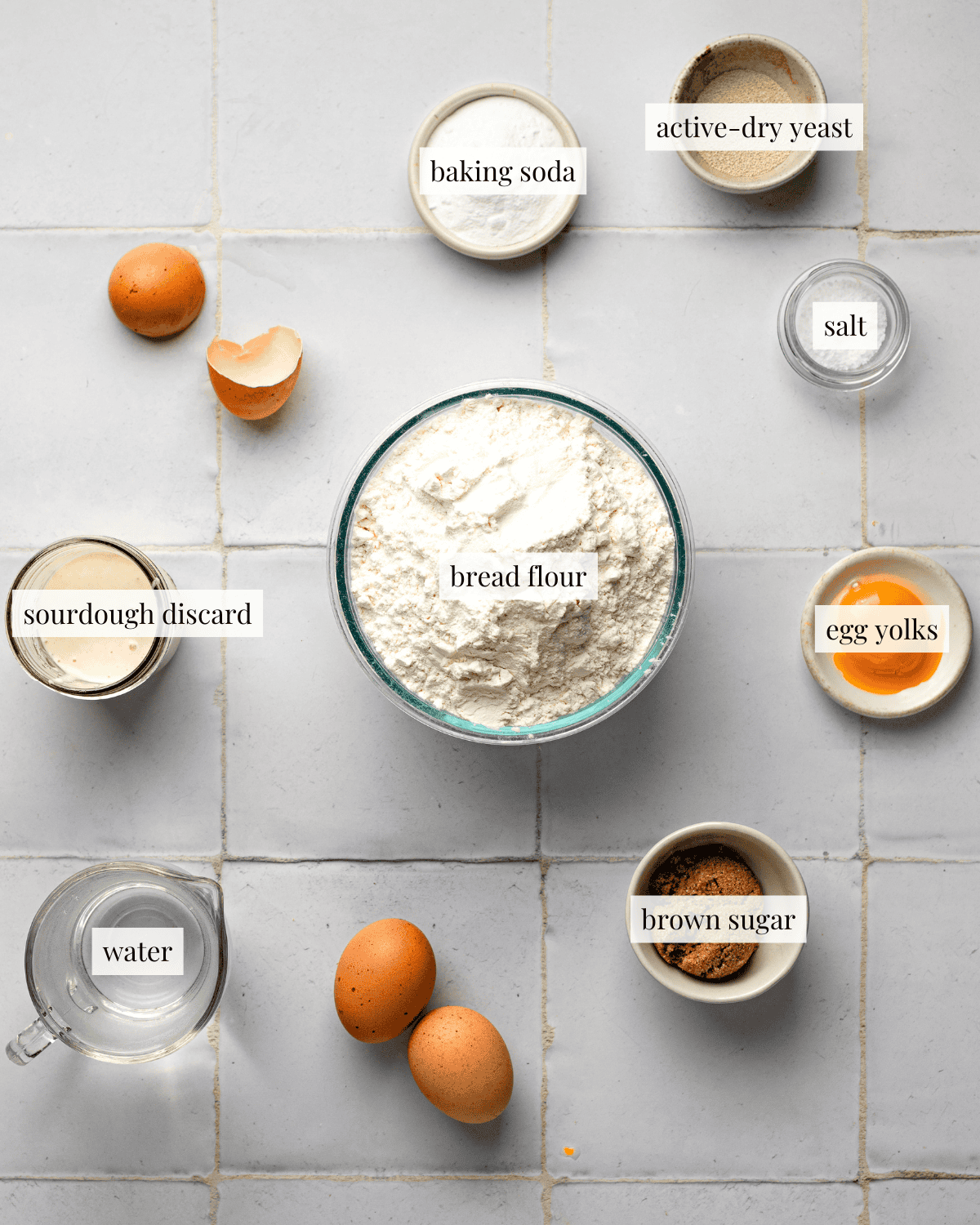
Bread flour: High protein content (at least 11.5%) of bread flour results in chewy bagels with a shiny crust. Do not substitute all-purpose flour or your bagels will be more like dinner rolls.
Active-dry yeast: You can also use instant yeast for this recipe, feel free to skip the blooming step if you choose to do so.
Egg yolks: Adds richness and a golden hue which makes these bagels extra special. Egg yolks are all fat so they don’t add excess liquid to the dough.
Sourdough discard: Both active starter and sourdough discard work for this recipe. Starter made with white flour will work as well as a rye starter. If you don’t have a sourdoughs starter, add 56 grams flour and 56 grams water to your dough.
See recipe card for detailed ingredient information.
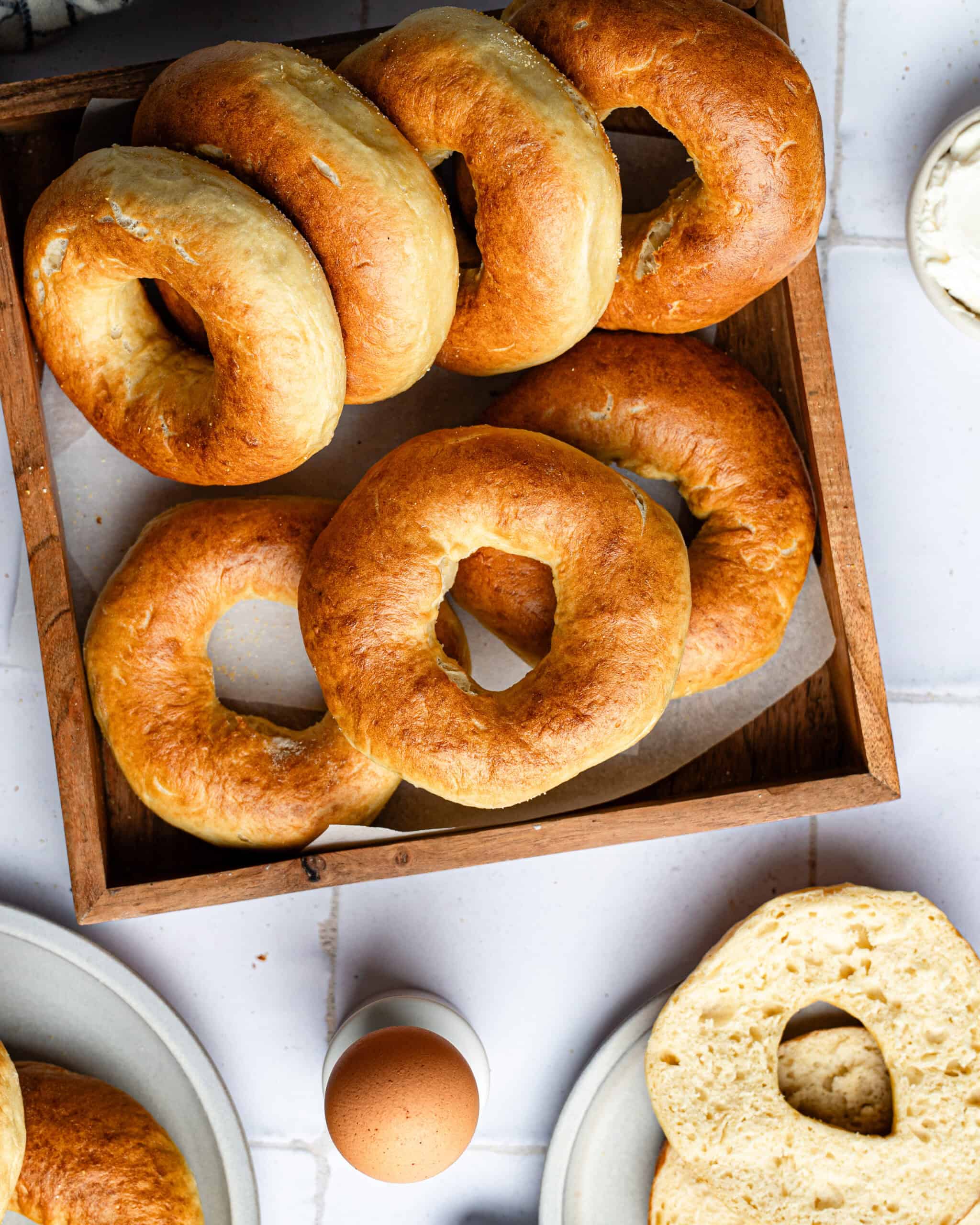
Check the expiration date on your yeast!
Active-dry yeast and instant yeast has a shelf life and won’t be able to make your dough rise once it is expired.
Step-by-step Instructions
STEP 1: Make the dough
Bloom the yeast. Whisk in the egg yolks and sourdough discard. Knead the dry ingredients in until a cohesive dough forms. Allow the dough to rest for 15 minutes, this makes the dough much easier to work with.

STEP 2: Knead the dough
Turn the dough out onto a clean work surface. Hold it steady with one hand, and use the palm of your other hand to press it away from you, then fold it back over itself, rotate, and repeat until the dough is smooth, elastic, and slightly tacky.
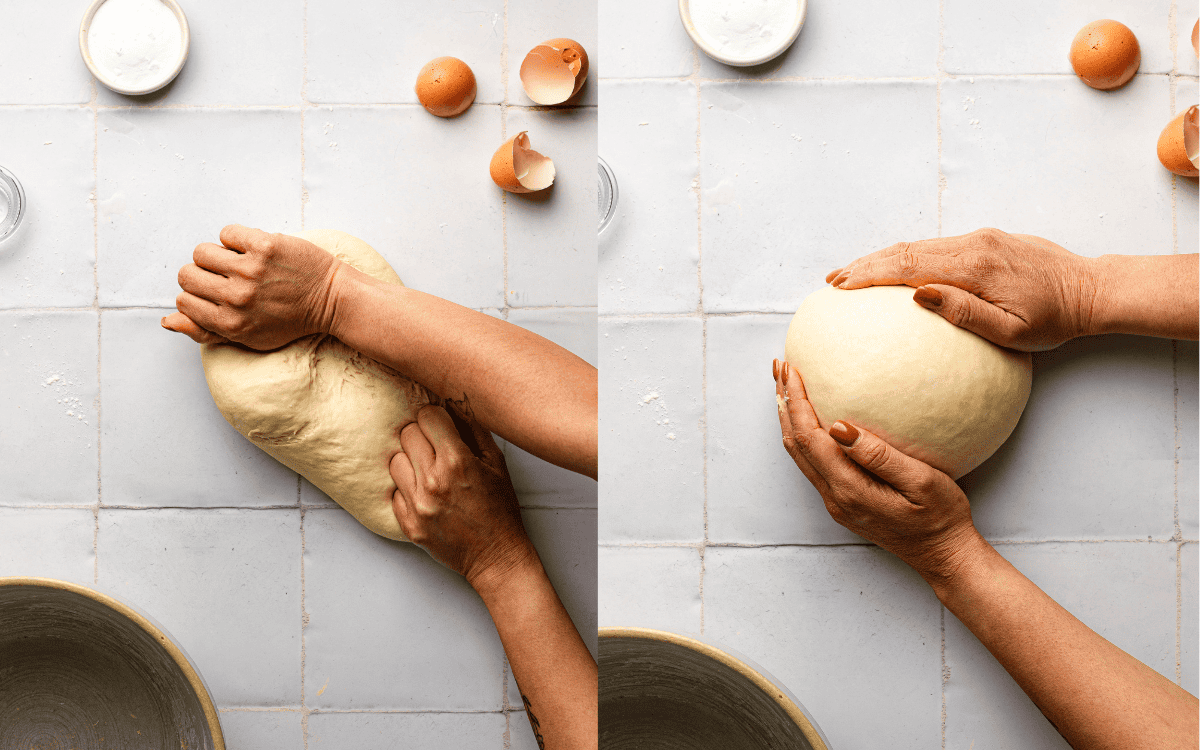
Importance of dough strength
Strong, well-developed gluten is essential for delicious bagels. It translates to a light, chewy crumb with a satisfyingly springy texture, ensuring the bagel holds its iconic donut shape. A smooth, tight dough is a good indicator of this gluten development.
STEP 3: Shape the bagels
Divide the dough into 8 or 10 portions (depending on how large you want your bagels). Round each portion of dough into a tight ball. There are two techniques for shaping bagels. Poke a hole in the center of each dough ball. Use your fingertips to widen the hole. Make the hole larger than you think to prevent it from closing up as the bagels bake in the oven.

STEP 4: Boil and bake
Bring a large pot of water with baking soda and brown sugar to a boil. Boil bagels for 1 minute, flip halfway through boiling. Transfer to a wire rack. Dust a parchment-lined baking sheet with cornmeal. Top with toppings of choice. Bake at 420 F for 25 to 30 minutes.
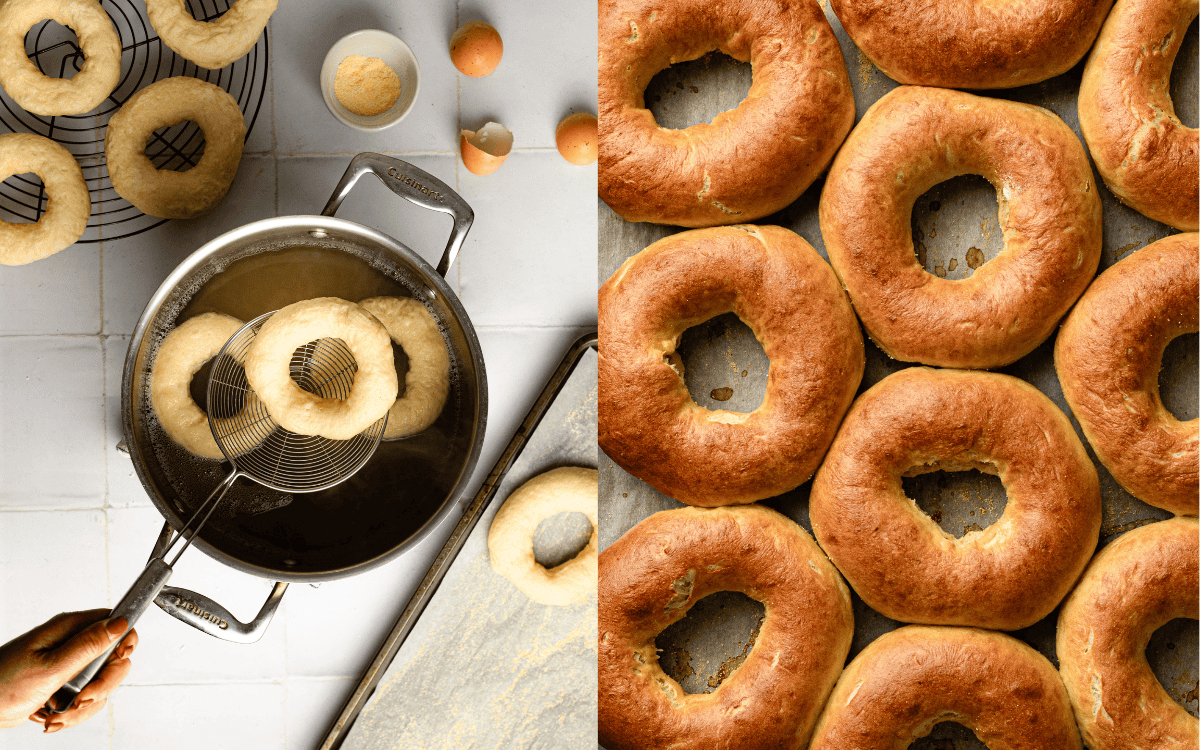
Baker's Tips
- Weigh your ingredients. Measuring with a scale is much more accurate than using tablespoons and cups.
- Both active sourdough starter and sourdough discard will work for this recipe.
- These bagels do not require a long rise time. Letting your dough rise too much will result in dull, overly chewy, and lumpy bagels.
- Don’t crowd bagels in the pot, only boil 2 or 3 at a time.
- The best way to determine whether your bread is baked is with a digital thermometer. The internal temperature of the bread should be between 190 to 200 F.

Make-ahead and Long Term Storage Instructions
How to freeze dough
- Shape the dough according to the instructions.
- Freeze the dough in a single layer.
- Boil and bake the dough according to instructions.
How to Freeze Baked Bagels
- Bake the bagels as instructed.
- Split the bagels in half and store them in a ziplock bag.
- Freeze for up to 1 month.
- Heat the bagels in a toaster until warmed through.
Recipe FAQs
Absolutely! This will help develop an even stronger gluten network. Simply add the ingredients to the bowl of your stand mixer, and knead with a dough hook until completely smooth (about 5 minutes).
Cover the bowl with plastic wrap and let the dough rest for 30 minutes before shaping.
Adjusting the formula and timelines can be a delicate matter with bread, try my Sourdough Bagel recipe instead!
You may like this
Did this recipe rise to the occasion?
★★★★★
Please leave a star rating and a comment. Your feedback helps me create more delicious sourdough recipes. I read and truly appreciate every message.
Don't forget to PIN this recipe on Pinterest to save it for later!
Thank you for your support!

Sourdough Discard Egg Bagel Recipe
Equipment
This section may contain affiliate links
Ingredients
Dough
- 28 grams brown sugar sub. honey
- 7 grams active-dry yeast
- 282 grams water
- 3 egg yolks
- 113 grams sourdough discard
- 600 grams bread flour
- 12 grams salt
Baking Soda Bath
- 96 oz water
- 14 grams brown sugar
- 28 grams baking soda
Toppings
- 10 grams cornmeal
Click US Customary to view volume measurements
Instructions
- Bloom the yeast: Whisk brown sugar, yeast and water together in a large bowl. Cover and let the yeast bloom until foamy, about 15 minutes.28 grams brown sugar, 7 grams active-dry yeast, 282 grams water
- Make the dough: Add sourdough discard and egg yolks into the yeast mixture and stir until dissolved. Using a sturdy wooden spoon, fold the remaining dough ingredients in until no traces of dry flour remain. You may need to switch to your hands to ensure the dough comes together.113 grams sourdough discard, 600 grams bread flour, 12 grams salt, 3 egg yolks
- Working in the bowl, continue to knead until a cohesive dough forms. The dough should feel stiff and it may feel difficult to incorporate all of the flour in, but continue working it until most of the flour is incorporated. Add up to 1 tablespoon of water only if absolutely necessary, you want your dough to be pretty stiff.
- Knead the dough: Turn the dough out on a clean surface (you shouldn’t need to use any flour). Knead the dough for 15 to 20 minutes or until the dough is tight and a little bumpy (this is an indication that gluten is forming).
- Bench rest: Return the dough to the bowl and let it rest for 15 minutes. Knead the dough for another 3 to 5 minutes until it looks completely smooth.
- Prep: Preheat the oven to 420 F and line an 18 by 13-inch baking sheet with parchment paper.
- Shape: Divide the dough into 10 even portions (about 100 grams each). Round each portion of dough into a tight ball, don’t use any bench flour or your dough will not be able to adhere to itself or hold its shape.
- Easy shaping: Starting with the first portion of dough you shaped, poke a hole in the center and stretch it out into a large hole. Make the hole larger than you think you need to (about 2 inches). Place the shaped dough on the prepared baking sheet. Continue with the remaining portions.
- New York Style shaping: Roll one ball of dough into a 10-inch rope. Wrap the rope around your palm, and pinch the seam closed.
- Poach the bagels: Boil water in a large pot. Whisk brown sugar and baking soda in.14 grams brown sugar, 28 grams baking soda, 96 oz water
- Once the water gets to a rolling boil, drop 3 bagels into the water. Cook for 30 seconds and flip. Transfer poached bagels to a wire rack. Repeat with remaining portions.
- Dust prepared baking sheet with cornmeal. Return the poached bagels to the baking sheet. Top with sesame seeds or everything bagel seasoning (if using).10 grams cornmeal
- Bake: Bake bagels for 25 to 30 minutes or until golden brown.
- Transfer to a wire rack and allow the bagels to cool for 15 minutes. Enjoy!
Tips
These recipes were developed and tested using grams for precise measurements. To increase your chances of success, I recommend investing in a kitchen scale. I've included rough volume estimates (in tablespoons and cups), but they might not be totally accurate.
Remember all ovens are unique, these recipes were tested in my oven which runs cooler than others. You might need to lower the temperature if your bake appears to be browning too quickly. Monitor your bake closely and make adjustments if needed.
Notes
- Both sourdough discard and active sourdough starter will work for this recipe.
- Don’t let your dough overproof. Letting your dough rise too much will result in dull, overly chewy, and lumpy bagels.
- The best way to determine whether your bread is baked is with a digital thermometer. The internal temperature of the bread should be between 190 to 200 F.
- The best way to keep these bagels fresh is to freeze them. Split bagels in half, wrap in plastic wrap and freeze for up to 1 month. Simply toast frozen bagels to enjoy.
Nutrition
I am not a nutritionist or dietitian, any nutrition information provided is an estimate.

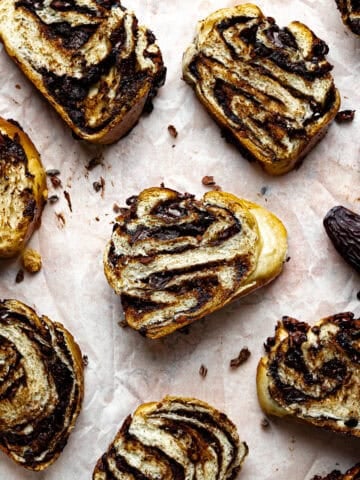
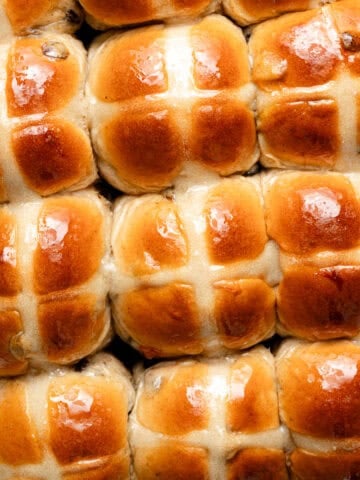
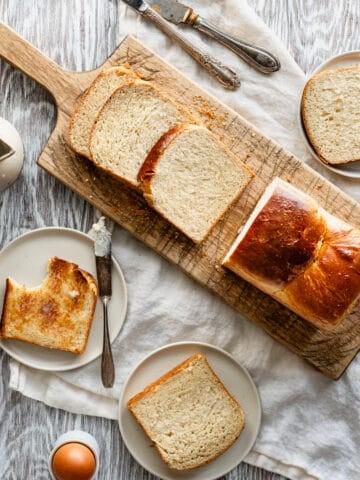




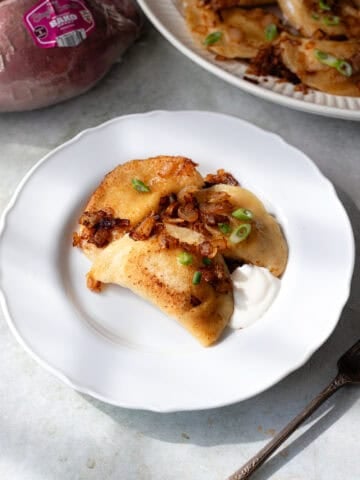
Did you make this recipe? Do you have questions? Let me know below!